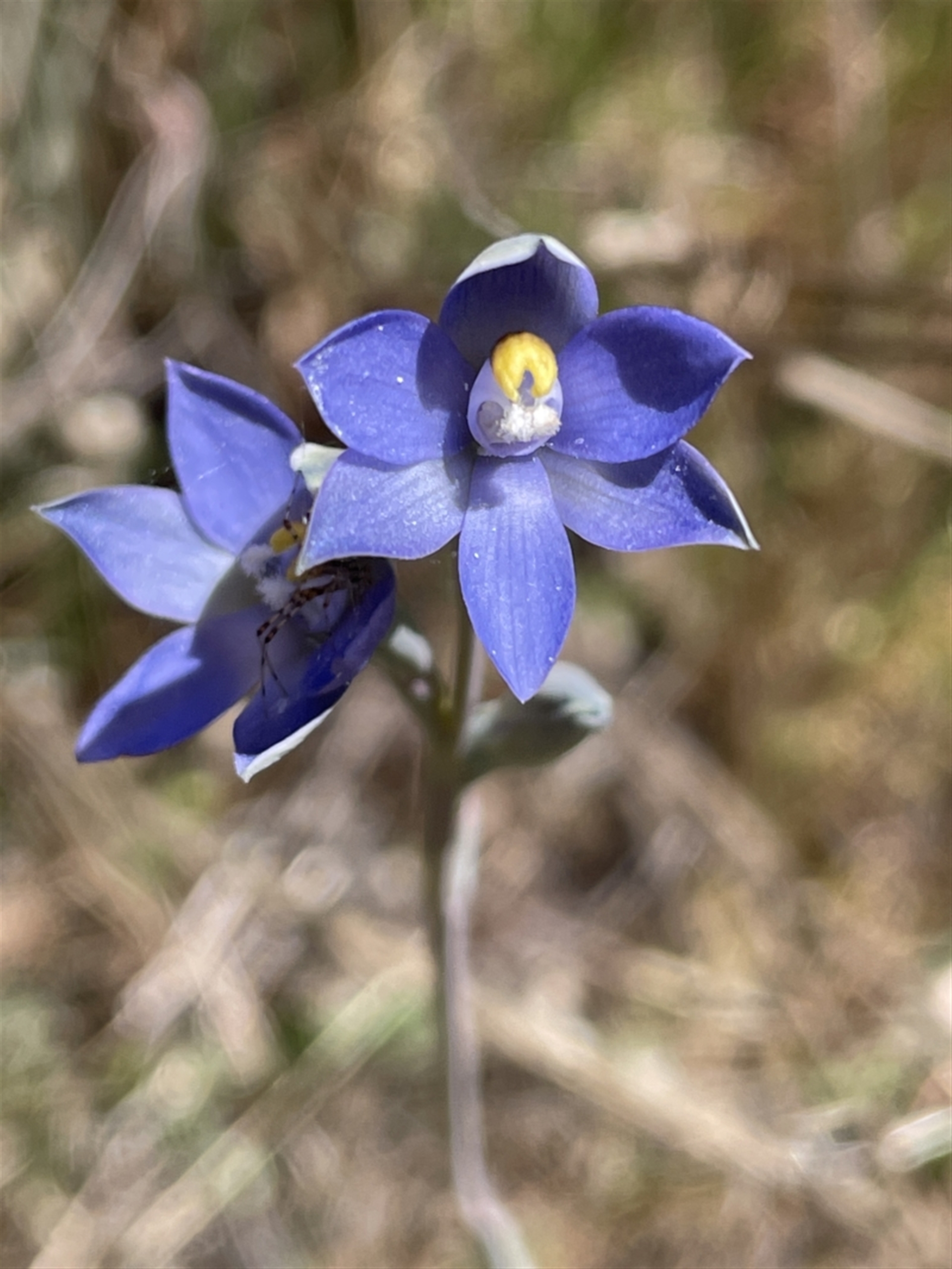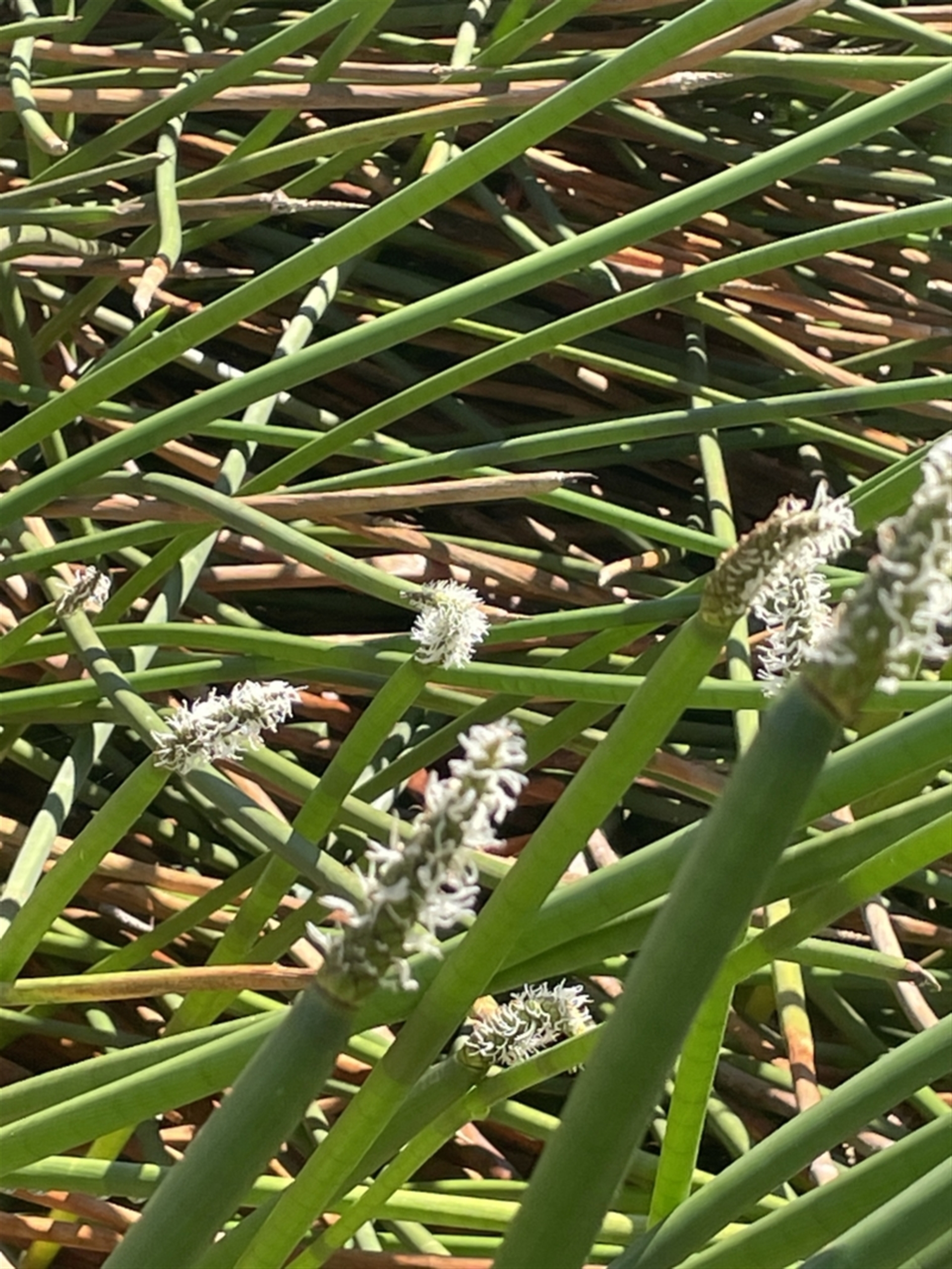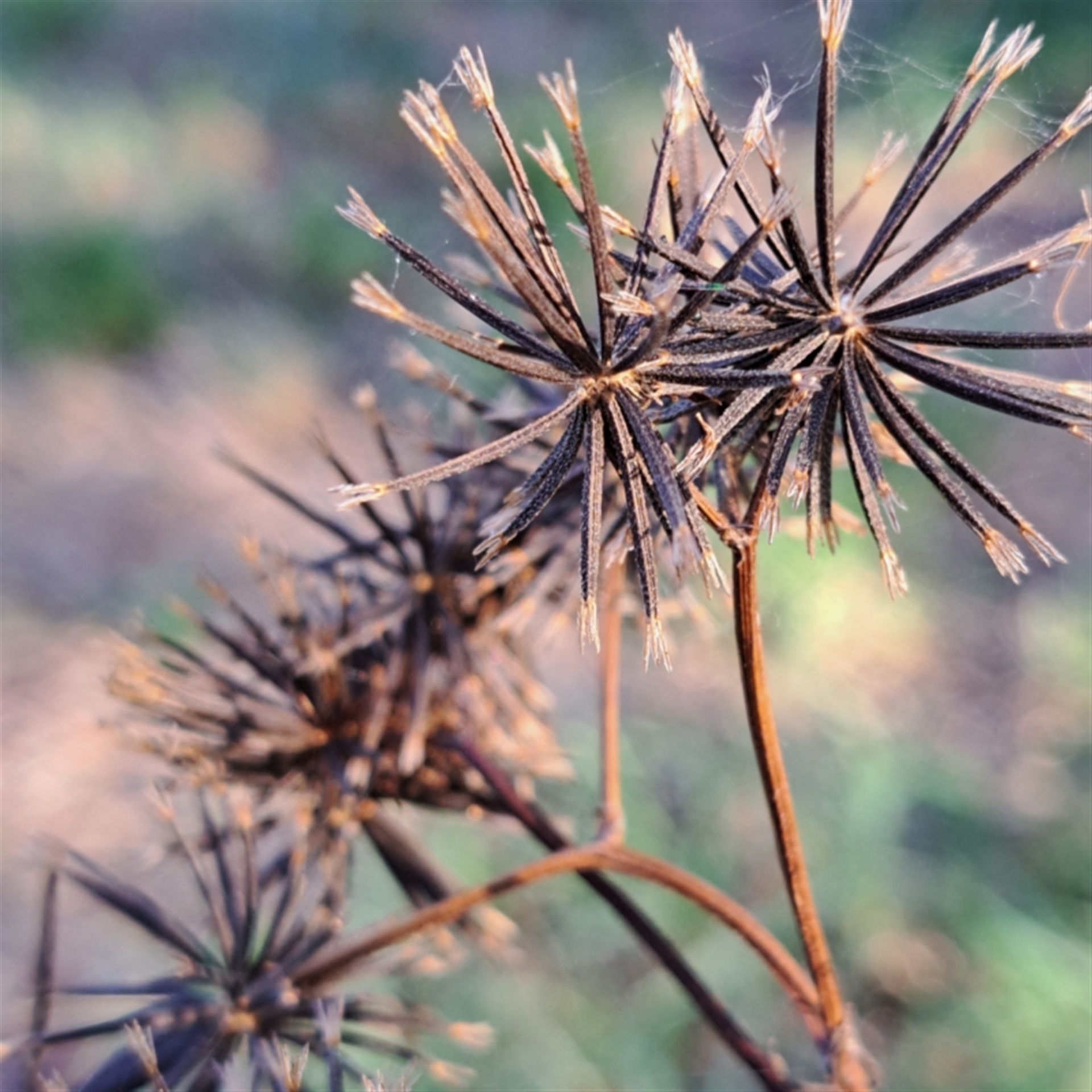
The Short-leaf Sun Orchid is one of the new species on the updated Flora list; note the legs of a spider hiding in the shade in the lower flower (Photo JaneR, courtesy of CNM).
Each year in Spring we review the plants sightings on Canberra NatureMapr (CNM) for the previous year. The collated data let us modify the Flora List which is available on the FoMM website to add in species which have been discovered since the last review. Also, we check for things like changes in naming, or alterations made to identifications.
Often, species known from one mountain, but not previously observed on the other, will now be found to be present on both mountains and we modify our list to take that into account.
The modifications we have made this year include adding 39 new species. 11 of these are local native species, 6 on Mt Majura (MM) and 5 on Mt Ainslie (MA) and the other 28 species are exotic plants of various kinds. The new orchid found on MA was actually seen on MM years ago but had not made it onto the flora list, probably because Sun Orchids are notoriously difficult to identify with certainty.
Here is a table with links to CNM of the 2024 new local plant species

Tall Spikerush, Eleocharis sphacelata with flower spikes; the robust plant can form dense stands in freshwater ponds (Photo JaneR, courtesy of CNM)
Many of the newly recorded species are rushes, sedges or grasses. These species are wind pollinated, lack pretty flowers, are difficult to identify and are often small and overlooked. But not always – Tall Spikerush is huge, and Tassel Sedge has an unusual distinctive flower head. Both species grow in water and the seeds are spread on the feet of water birds, so their recent arrival here may be a reflection of the three wet LaNina years we recently experienced.
Large River Tussock Grass, Poa labillardierei probably occurred in low numbers on the mountain for a long while and we needed help from botanist Isobel Crawford to distinguish this species from another more common large Poa tussock, Poa sieberiana.
As for the newly recorded exotic plants, most of them are tree and shrub garden escapees, with fruits attractive to birds like Currawongs, that eat the fruit and then spread the seed into the neighbouring reserves.

The spiky fruits of the invasive weed Greater Beggar’s Ticks, Bidens subalternans stick to socks and fur (Photo abread, courtesy of CNM).
One weed which does not fit this category is Greater Beggar’s Ticks, Bidens subalternans var. subalternans, a daisy flower which has sharp points on its seeds that stick to clothing and fur. It is being spread into nature reserves by walkers and their dogs and there are some now in Mt Ainslie reserve as well as on Mt Majura. So take care when walking, photograph sightings for CNM or report on FieldMaps.


